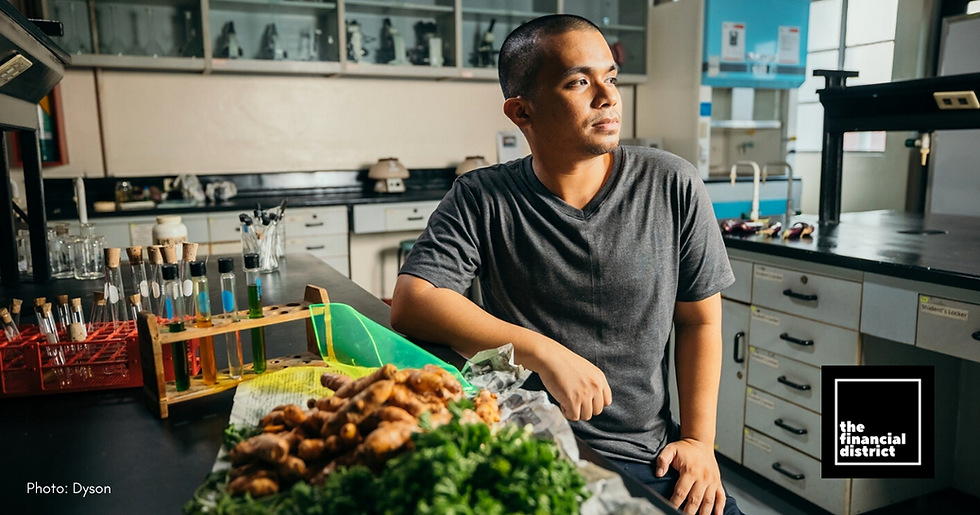Filipino Student Makes Solar Panels From Fruit, Vegetable Waste
- By The Financial District

- Feb 21, 2022
- 2 min read
Solar panels that don’t require direct sunlight have been invented in another leap forwards for clean energy. A Filipino engineering student designed the revolutionary material using luminescent particles from fruit and vegetable waste, Lottie Limb reported for Euronews.Green.

Photo Insert: Carvey Ehren Maigue, 29, won the James Dyson Foundation Sustainability Award in 2020.
Carvey Ehren Maigue, 29, won the James Dyson Foundation Sustainability Award in 2020 for the panels he constructed at Mapua University in the Philippines. As they do inside crops, these particles absorb the sun’s ultraviolet rays and turn them into visible light.
The panels are then able to convert this harvested light into electricity. Ultraviolet rays still reach us on cloudy days, meaning there is huge potential to scale the technology up in urban areas - as well as in other places that a conventional solar panel wouldn’t sit.
“We upcycle the crops of the farmers that were hit by natural disasters, such as typhoons, which also happen to be an effect of climate change,” explains Maigue.
Of 78 types of local crops tested, nine showed high potential. These are crushed, juiced, and filtered to extract luminescent particles, which are then suspended in resin.
The resulting material can be molded into cladding and clamped to walls, or sandwiched between two panes of double glazed window to start generating renewable energy for the building. It does this by reflecting the converted light to the edges of the panel, where strings of regular photovoltaic (PV) cells are waiting to capture and convert it into electricity.
One area for improvement is moving from 80 percent fruit and vegetable sources to 100 percent, skipping chemical ones completely. Among the five colors used - red, orange, yellow, green, and blue - a natural alternative for the blue dye has yet to be found.
Inspired by auroras and called AuREUS, the particles are placed on a resin surface that can be molded into different shapes. Thinner than a pencil, these solar panels are set to revolutionize the way we use solar power, and they can even be used for fabrics, meaning people can use their clothes to generate electricity.
Discussing his invention in 2020, Maigue said he wanted to bring the product to the market immediately while also investing in further research. “I want to create threads and fabric so that even your clothes would be able to harvest ultraviolet light and convert it into electricity.”





![TFD [LOGO] (10).png](https://static.wixstatic.com/media/bea252_c1775b2fb69c4411abe5f0d27e15b130~mv2.png/v1/crop/x_150,y_143,w_1221,h_1193/fill/w_179,h_176,al_c,q_85,usm_0.66_1.00_0.01,enc_avif,quality_auto/TFD%20%5BLOGO%5D%20(10).png)











